 QA:古希腊的雕像其实是彩色的?当今人们又为什么对于这一点难以接受呢?
QA:古希腊的雕像其实是彩色的?当今人们又为什么对于这一点难以接受呢?
正文翻译
What was normal in ancient Greece and absurd today? Why do you think this way?
什么东西在古希腊是正常的,在今天却是荒谬的?又为什么是荒谬的?
什么东西在古希腊是正常的,在今天却是荒谬的?又为什么是荒谬的?
评论翻译
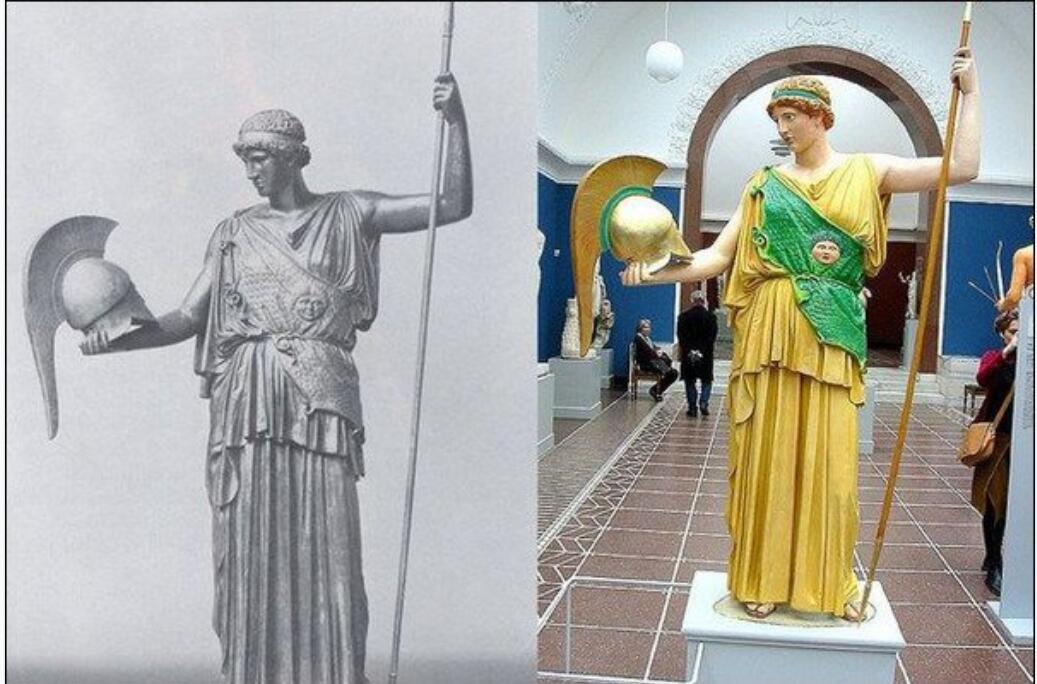
Geraldine Merola
After having gotten used to the white marble “classic” look I find the painted versions a bit tacky.
在习惯了白色大理石的“经典”外观后,我觉得上色版的有点俗气。
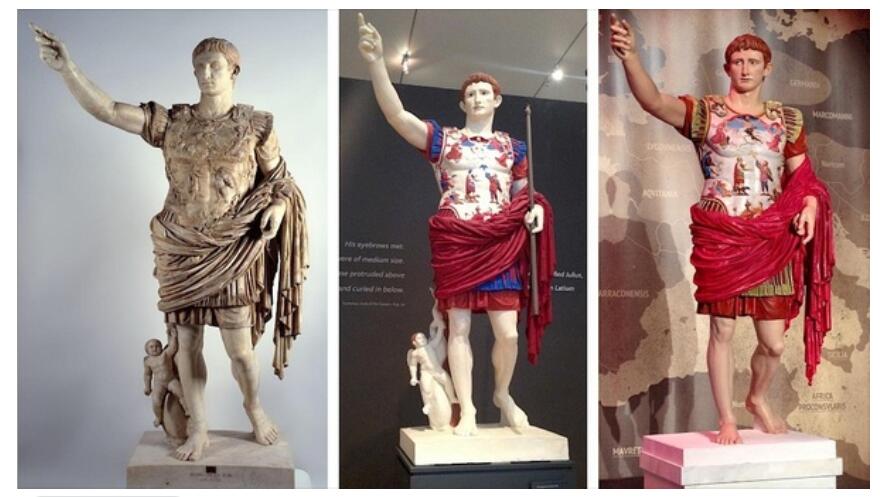
下面这个彩绘在我看来真是太棒了:
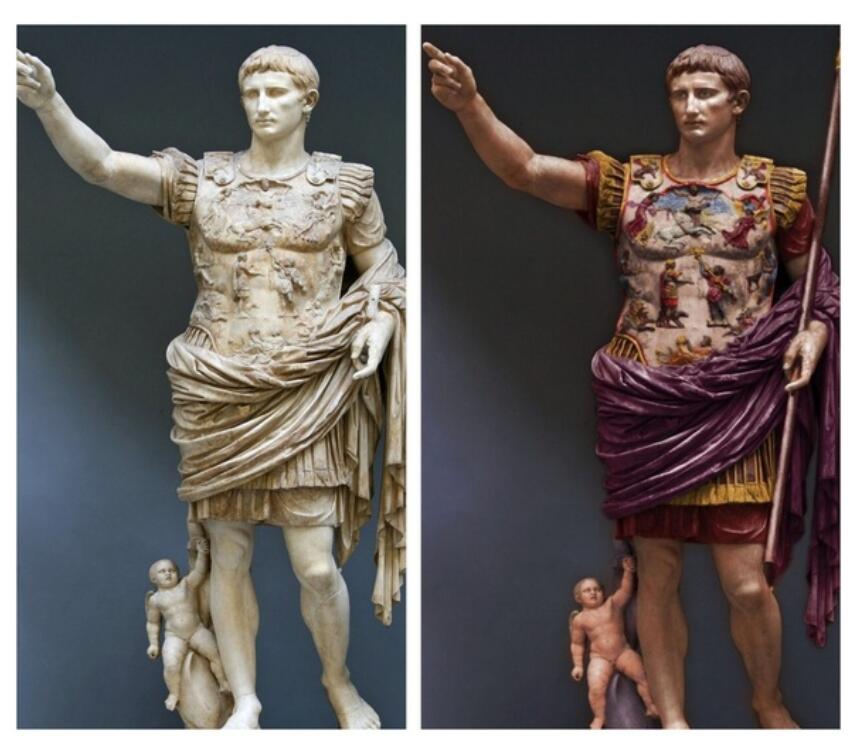
此外,请记住,我们今天看到的许多雕像最初都是用来装饰神庙山墙的,并不是在地面上观看的。我个人更喜欢帕台农神庙的多色外观:
不要忘了,随着时间的推移,暴露在阳光和烟雾下可能会使颜色变淡。
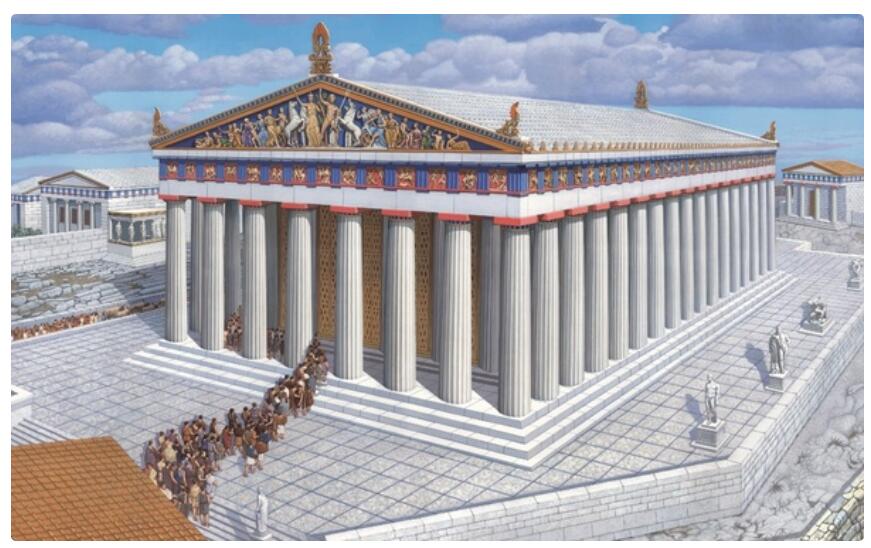
Guillermo Cornejo
Yes. Many Catholic churches have painted figured reminiscent of Roman times. Also, many other ancient ruins suffer from this decoloration. Tenichtitlan was mostly red…would’ve been quite a sight
是的。许多天主教堂的绘画让人想起罗马时代。此外,许多其他古代遗址也有这种脱色现象。特诺奇提特兰当初大部分都是红色的……想必一定非常壮观
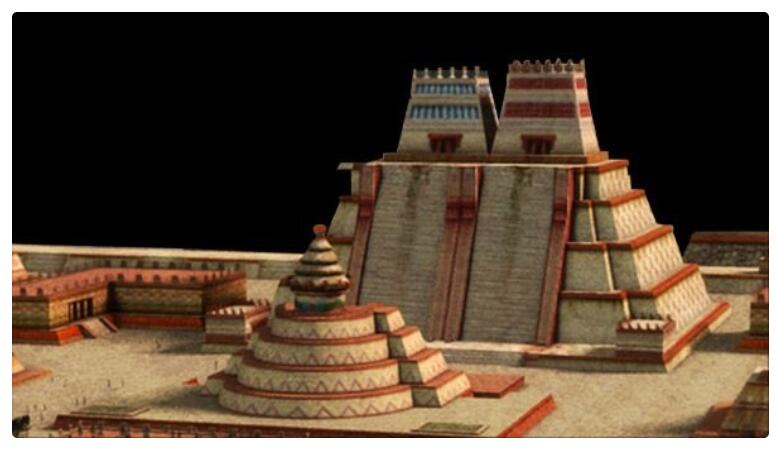
就罗马而言,我们可以根据现存的壁画了解城市最初的面貌(或者至少是罗马人理想中的面貌)。
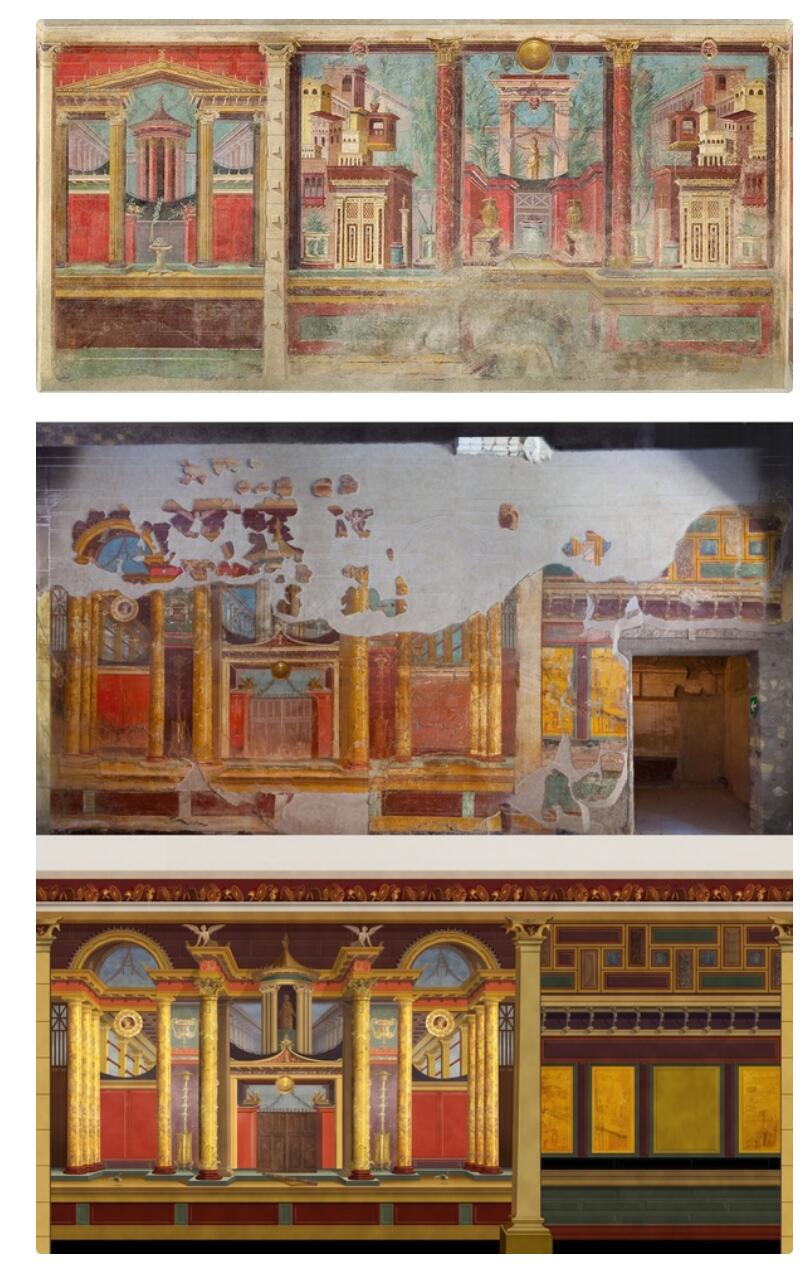
Guillermo Cornejo
Looks like romans liked gold and red!
看来罗马人喜欢金色和红色!
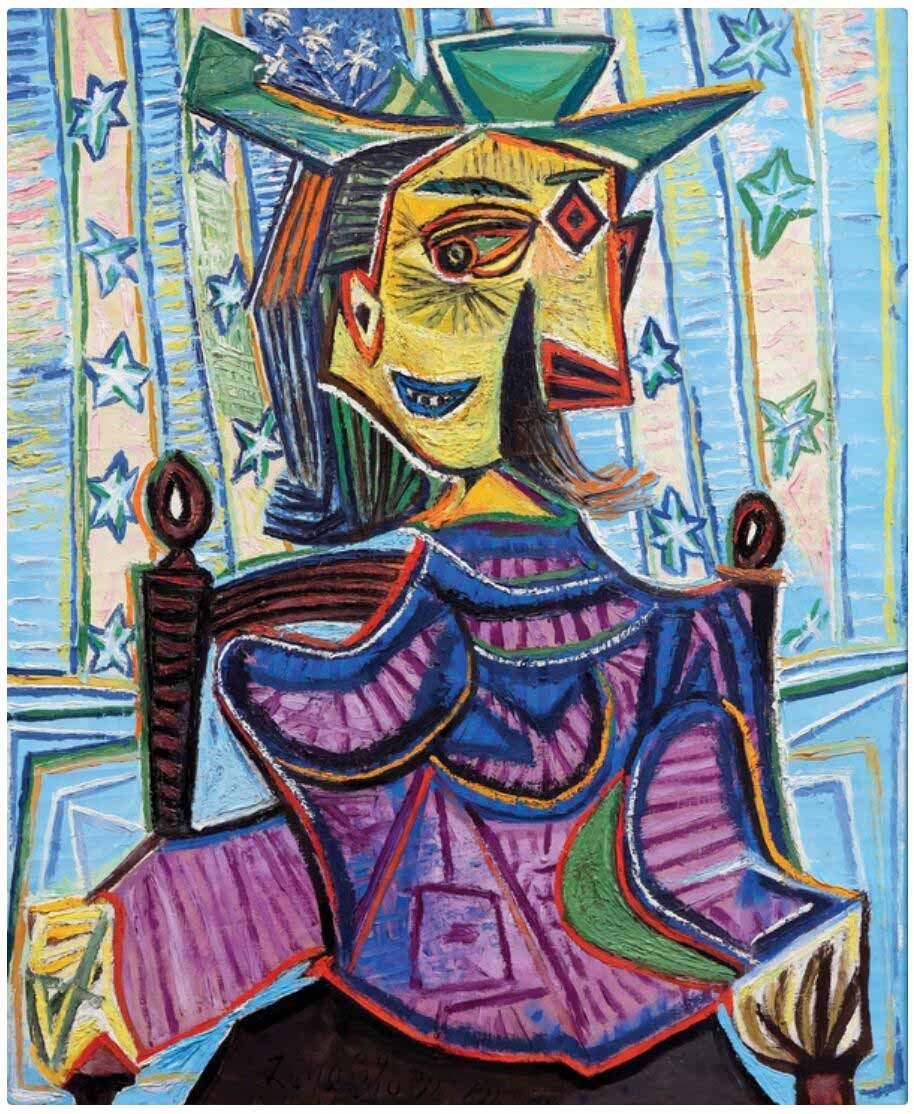
Hrefna Frederiksen
Saffron was for the extremely wealthy. It was, and remains, the most expensive spice on Earth.
藏红花是极其富有的人才能享用的。它过去是,现在仍然是地球上最昂贵的香料。
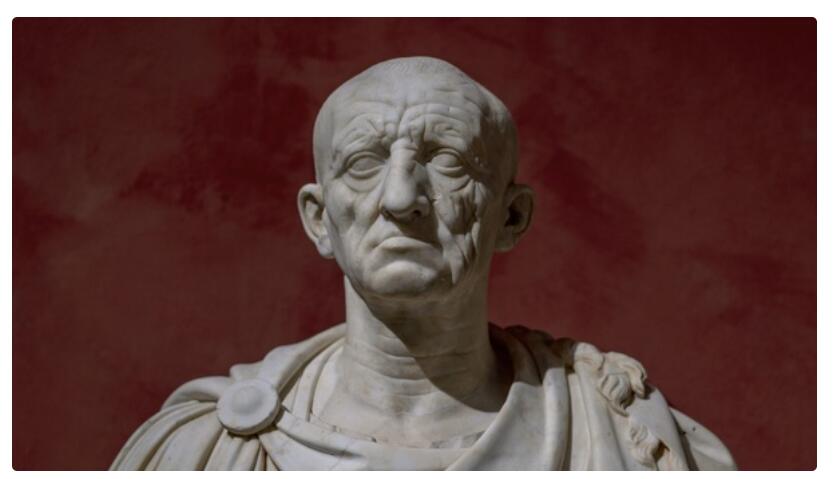
罗马人喜欢这种风格,因为他们相信年龄意味着智慧和安全,而年轻则是危险和未经考验的。这种风格时好时坏,取决于希腊化影响的程度和想要达到的效果。例如,维斯帕先就使用了 “真实主义”作为一种宣传形式;作为一个新王朝的建立者,他希望展现出一个捍卫罗马传统价值观的形象。
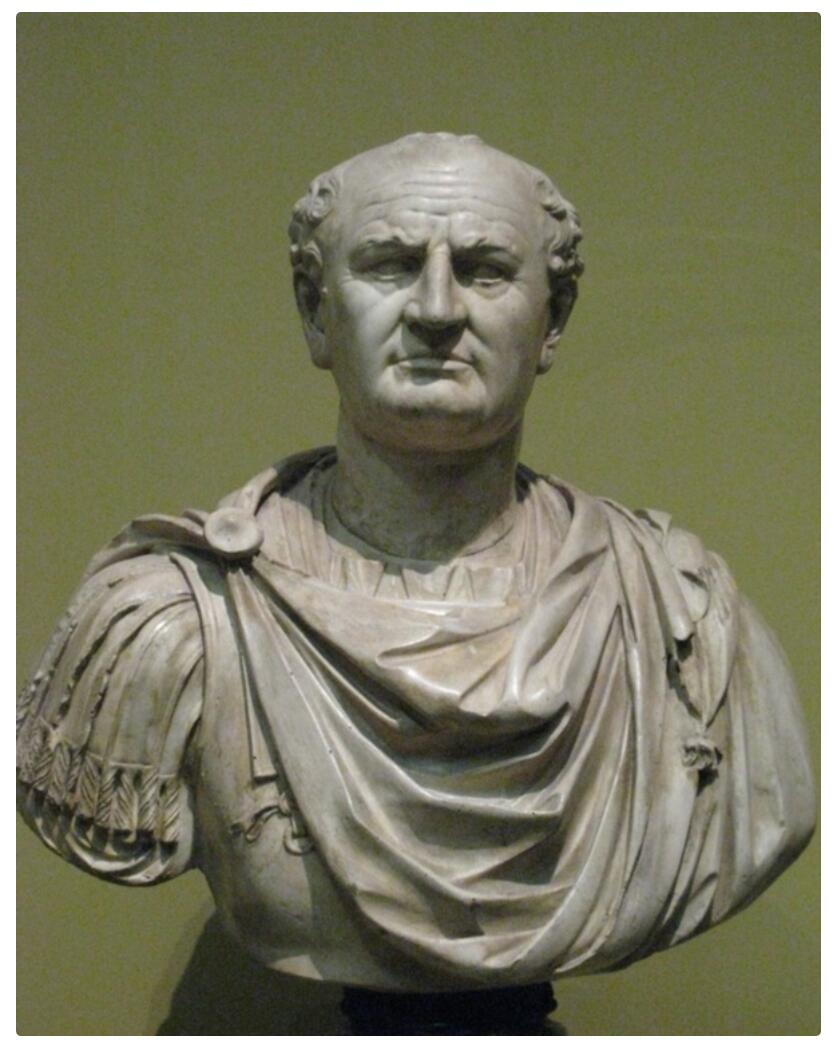
Steve Spathis
Funny thing is todays Maddame Toussaudes wax museum is the modern version where no figure is a plain wax colour
有趣的是,今天的杜莎夫人蜡像馆是现代版希腊雕像,没有一个蜡像是纯色的
Dale P Lee
Lives in The United States of America
The painted statues. For a Greek there was nothing uglier than an unpainted statue...
But in the Renaissance, when they wanted to adopt the Greco/Roman culture as a base, few statues kept their paint and now we associate that era with white statues...
Now many reject color restorations of Greco-Roman art.
彩绘雕像。对于一个古希腊人来说,最丑的东西莫过于没有上色雕像...
但在文艺复兴时期,当他们接纳希腊/罗马文化为基础时,却很少有雕像保留了彩绘,现在的我们直接将那个时代与白色雕像联系在一起...
现在还有很多人拒绝接受希腊-罗马艺术的彩色复原。
原创翻译:龙腾网 https://www.ltaaa.cn 转载请注明出处
Lives in The United States of America
The painted statues. For a Greek there was nothing uglier than an unpainted statue...
But in the Renaissance, when they wanted to adopt the Greco/Roman culture as a base, few statues kept their paint and now we associate that era with white statues...
Now many reject color restorations of Greco-Roman art.
彩绘雕像。对于一个古希腊人来说,最丑的东西莫过于没有上色雕像...
但在文艺复兴时期,当他们接纳希腊/罗马文化为基础时,却很少有雕像保留了彩绘,现在的我们直接将那个时代与白色雕像联系在一起...
现在还有很多人拒绝接受希腊-罗马艺术的彩色复原。
原创翻译:龙腾网 https://www.ltaaa.cn 转载请注明出处

Geraldine Merola
After having gotten used to the white marble “classic” look I find the painted versions a bit tacky.
在习惯了白色大理石的“经典”外观后,我觉得上色版的有点俗气。
Mark Whickman
One point is that the painted versions we see may not be how they actually looked - the work was meant to match the colours, but they only know in a crude sense. They could have been painted to near photo-real quality, but the few pigment flecks we have left would not tell us that.
一个观点是,我们现在看到的彩绘版本可能不是它们原来上色的样子——后来上色的作品是为了匹配之前留下的颜色,但他们只知道粗略的样子。这些雕像本来的彩绘本来可能更接近于照片般真实的质量,但我们根据留下的少数颜料斑点并不能准确地还原这一点。
One point is that the painted versions we see may not be how they actually looked - the work was meant to match the colours, but they only know in a crude sense. They could have been painted to near photo-real quality, but the few pigment flecks we have left would not tell us that.
一个观点是,我们现在看到的彩绘版本可能不是它们原来上色的样子——后来上色的作品是为了匹配之前留下的颜色,但他们只知道粗略的样子。这些雕像本来的彩绘本来可能更接近于照片般真实的质量,但我们根据留下的少数颜料斑点并不能准确地还原这一点。
Claire Jordan
The painted versions we have now look a bit like fairground art.
我们现在复原的彩绘版本看起来跟儿童乐园的配色似的。
The painted versions we have now look a bit like fairground art.
我们现在复原的彩绘版本看起来跟儿童乐园的配色似的。
Micah Bush
I daresay some artist’s conceptions are better than others. The Augustus on the right looks far better than the one in the middle, for instance.
And this conception is, in my mind, phenomenal:
Keep in mind, too, that many of the statues that we have today were originally used to decorate temple pediments, and would not have been viewed at ground level. Personally, I prefer the polychrome look of the Parthenon:
And let’s not forget that exposure to sunshine and smoke would probably have muted the colors over time.
我得说,有些艺术家的上色比其他艺术家做得更好。比如,右边的奥古斯都就比中间的好看得多。
I daresay some artist’s conceptions are better than others. The Augustus on the right looks far better than the one in the middle, for instance.
And this conception is, in my mind, phenomenal:
Keep in mind, too, that many of the statues that we have today were originally used to decorate temple pediments, and would not have been viewed at ground level. Personally, I prefer the polychrome look of the Parthenon:
And let’s not forget that exposure to sunshine and smoke would probably have muted the colors over time.
我得说,有些艺术家的上色比其他艺术家做得更好。比如,右边的奥古斯都就比中间的好看得多。

下面这个彩绘在我看来真是太棒了:

此外,请记住,我们今天看到的许多雕像最初都是用来装饰神庙山墙的,并不是在地面上观看的。我个人更喜欢帕台农神庙的多色外观:
不要忘了,随着时间的推移,暴露在阳光和烟雾下可能会使颜色变淡。

Guillermo Cornejo
Yes. Many Catholic churches have painted figured reminiscent of Roman times. Also, many other ancient ruins suffer from this decoloration. Tenichtitlan was mostly red…would’ve been quite a sight
是的。许多天主教堂的绘画让人想起罗马时代。此外,许多其他古代遗址也有这种脱色现象。特诺奇提特兰当初大部分都是红色的……想必一定非常壮观
Micah Bush
Quite true. Many people don't realize that Mayan and Aztec stone structures were originally covered with plaster and painted.
And in the case of Rome, we can get some idea of what the cities originally looked like (or at least how the Romans idealized them) based on surviving frescoes.
非常正确。很多人都不知道玛雅和阿兹特克的石头建筑最初是用石膏覆盖并涂上颜色的。
Quite true. Many people don't realize that Mayan and Aztec stone structures were originally covered with plaster and painted.
And in the case of Rome, we can get some idea of what the cities originally looked like (or at least how the Romans idealized them) based on surviving frescoes.
非常正确。很多人都不知道玛雅和阿兹特克的石头建筑最初是用石膏覆盖并涂上颜色的。

就罗马而言,我们可以根据现存的壁画了解城市最初的面貌(或者至少是罗马人理想中的面貌)。

Guillermo Cornejo
Looks like romans liked gold and red!
看来罗马人喜欢金色和红色!
Toming Simaraja
Yes haha, the center is like cartoon
是的哈哈,中间那幅就像卡通一样
Yes haha, the center is like cartoon
是的哈哈,中间那幅就像卡通一样
Toming Simaraja
And you must consider rainbow generation who destroy the masculinisme
你必须考虑摧毁大男子主义的彩虹一代
And you must consider rainbow generation who destroy the masculinisme
你必须考虑摧毁大男子主义的彩虹一代
Matthew M
The Augustus in the middle looks like Zuckerberg.
中间那幅奥古斯都看起来像扎克伯格。
The Augustus in the middle looks like Zuckerberg.
中间那幅奥古斯都看起来像扎克伯格。
Dorothy Scott
I Think If You Saw Them Under The Amazing Aegean Sun And Sky, U Might Be Blown Away…..
我想如果你在爱琴海令人惊叹的阳光和天空下看到它们,你可能目瞪口呆........
原创翻译:龙腾网 https://www.ltaaa.cn 转载请注明出处
I Think If You Saw Them Under The Amazing Aegean Sun And Sky, U Might Be Blown Away…..
我想如果你在爱琴海令人惊叹的阳光和天空下看到它们,你可能目瞪口呆........
原创翻译:龙腾网 https://www.ltaaa.cn 转载请注明出处
Chris Sold
it is likely that the coloring on the statues was as refined as the carving of the marble is today.
雕像上的色彩很可能和今天的大理石雕刻一样精致。
it is likely that the coloring on the statues was as refined as the carving of the marble is today.
雕像上的色彩很可能和今天的大理石雕刻一样精致。
William Lim
I thought so at first too but the more I look at the painted versions, I actually like them better now.
一开始我也是这么想的,但随着我看的彩绘版越多,我现在实际上更喜欢它们了。
I thought so at first too but the more I look at the painted versions, I actually like them better now.
一开始我也是这么想的,但随着我看的彩绘版越多,我现在实际上更喜欢它们了。
Lee Slee
Owning brightly colored clothes would most likely have been a sign of affluence or importance. The average Joe in ancient times would have had clothes the color of the raw material or a few articles of clothing with the ever-fading colors that onion skins, beets or maaaaaybe saffron could offer.
Rich people and nobles could afford
better coloring agents
larger quantities of coloring agents and finally
could redye or get new ones, once the color started to fade.
So of course the statues would wear brightly colored clothes because they were all depicting “somebodies” (gods, politicians, noblemen and noblewomen).
Today we find it tacky because we are free to tweak each color on earth to suit our taste. And many of you are either purposely forgetting or are too young to remember the ridiculous neon colors that were in style in the 80s. Half the population looked like traffic cones or water buoys.
Today we also consider the picture of health a lean. tanned and toned person. Just 100 years ago, being plump or even obese was an indication of wealth and status. And even further back, being extremely pale (especially women) was an indication of being wealthy.
So for those that find art created 2000+ years ago tacky, I’m pretty sure the people from that time will have a mouthful to say about our taste today and a lot more about our eyesight
拥有色彩鲜艳的衣服很可能是富裕或身份的标志。在古代,普通人的衣服可能是原材料的颜色,或者是几件洋葱皮、甜菜或藏红花所能提供的不断褪色的衣服。
有钱人和贵族可以买得起:
1. 更好的染色剂
2. 更多的染色剂,最后
3. 一旦颜色开始褪色,他们就可以重新染色或购买新的染色剂。
因此,雕像当然会穿着色彩鲜艳的衣服,因为他们都是在描绘“某人”(神、政治家、贵族和贵妇)。
今天,我们觉得这很俗气,因为我们可以自由地调取地球上的每一种颜色,以迎合我们的口味。而你们中的许多人要么是故意忘记了,要么是太年轻了,不记得 80 年代流行的可笑的霓虹色。一半的人的穿着看起来像交通锥或水浮标。
今天,我们还认为瘦削、黝黑、匀称的人是健康的象征。而就在 100 年前,丰满甚至肥胖还是财富和地位的象征。而在更久远的年代,肤色苍白(尤其是女性)是富有的象征。
因此,对于那些认为 2000 多年前创作的艺术品俗不可耐的人来说,我敢肯定,当时的人们会对我们今天的品位有一肚子话要说,而且对我们的视力表示高度质疑
Owning brightly colored clothes would most likely have been a sign of affluence or importance. The average Joe in ancient times would have had clothes the color of the raw material or a few articles of clothing with the ever-fading colors that onion skins, beets or maaaaaybe saffron could offer.
Rich people and nobles could afford
better coloring agents
larger quantities of coloring agents and finally
could redye or get new ones, once the color started to fade.
So of course the statues would wear brightly colored clothes because they were all depicting “somebodies” (gods, politicians, noblemen and noblewomen).
Today we find it tacky because we are free to tweak each color on earth to suit our taste. And many of you are either purposely forgetting or are too young to remember the ridiculous neon colors that were in style in the 80s. Half the population looked like traffic cones or water buoys.
Today we also consider the picture of health a lean. tanned and toned person. Just 100 years ago, being plump or even obese was an indication of wealth and status. And even further back, being extremely pale (especially women) was an indication of being wealthy.
So for those that find art created 2000+ years ago tacky, I’m pretty sure the people from that time will have a mouthful to say about our taste today and a lot more about our eyesight
拥有色彩鲜艳的衣服很可能是富裕或身份的标志。在古代,普通人的衣服可能是原材料的颜色,或者是几件洋葱皮、甜菜或藏红花所能提供的不断褪色的衣服。
有钱人和贵族可以买得起:
1. 更好的染色剂
2. 更多的染色剂,最后
3. 一旦颜色开始褪色,他们就可以重新染色或购买新的染色剂。
因此,雕像当然会穿着色彩鲜艳的衣服,因为他们都是在描绘“某人”(神、政治家、贵族和贵妇)。
今天,我们觉得这很俗气,因为我们可以自由地调取地球上的每一种颜色,以迎合我们的口味。而你们中的许多人要么是故意忘记了,要么是太年轻了,不记得 80 年代流行的可笑的霓虹色。一半的人的穿着看起来像交通锥或水浮标。
今天,我们还认为瘦削、黝黑、匀称的人是健康的象征。而就在 100 年前,丰满甚至肥胖还是财富和地位的象征。而在更久远的年代,肤色苍白(尤其是女性)是富有的象征。
因此,对于那些认为 2000 多年前创作的艺术品俗不可耐的人来说,我敢肯定,当时的人们会对我们今天的品位有一肚子话要说,而且对我们的视力表示高度质疑

Hrefna Frederiksen
Saffron was for the extremely wealthy. It was, and remains, the most expensive spice on Earth.
藏红花是极其富有的人才能享用的。它过去是,现在仍然是地球上最昂贵的香料。
Ren Wal
Oh i get them all to well as a miniature hobby painter.
Paint your damn models before fielding them, nobody wanta see see your grey tide on the table top. Why shouldnt it be so for statues?
Always found it odd that they just had bare stone statues where weathering would make them slowly degrade. Paints and laquers helps with that. Smart they where those sold folks.
Now we just need to realise we can do the same with the sad and ugly cement and beton building that are so popular to build because it's cheap.
作为一名微型模型爱好者,我很清楚这一点。
给你的模型上上色再拿出来显摆吧,没人想在桌面上看到你灰头土脸的样子。为什么雕像不能这样呢?
我一直觉得光秃秃的石像很奇怪,风化会让它们慢慢被侵蚀。油漆和涂料可以解决这个问题。卖这些东西的人真聪明。
现在,我们需要意识到,我们也可以用同样的方法来改造那些可悲而丑陋,只是因为便宜才流行的水泥和沥青建筑。
Oh i get them all to well as a miniature hobby painter.
Paint your damn models before fielding them, nobody wanta see see your grey tide on the table top. Why shouldnt it be so for statues?
Always found it odd that they just had bare stone statues where weathering would make them slowly degrade. Paints and laquers helps with that. Smart they where those sold folks.
Now we just need to realise we can do the same with the sad and ugly cement and beton building that are so popular to build because it's cheap.
作为一名微型模型爱好者,我很清楚这一点。
给你的模型上上色再拿出来显摆吧,没人想在桌面上看到你灰头土脸的样子。为什么雕像不能这样呢?
我一直觉得光秃秃的石像很奇怪,风化会让它们慢慢被侵蚀。油漆和涂料可以解决这个问题。卖这些东西的人真聪明。
现在,我们需要意识到,我们也可以用同样的方法来改造那些可悲而丑陋,只是因为便宜才流行的水泥和沥青建筑。
Paul Wellingslongmore
The revulsion is probably because most modern restorations go for tacky vibrant colours. Surely the ancient Greeks weren’t thinking like Jeff Koons. Modern restorers made the same mistake when they repainted the Sistine Chapel ceiling - too bright and gaudy. If the sculptures were coloured with muted and smoky hues the effect would no doubt have been impressive.
人们之所以反感,可能是因为大多数现代修复作品都采用了俗气的鲜艳色彩。古希腊人肯定不会像杰夫-昆斯那样思考问题。现代修复师在重新粉刷西斯廷教堂天花板时也犯了同样的错误--过于鲜艳和华而不实。如果用柔和的烟熏色给雕塑上色,效果无疑会令人印象深刻。
原创翻译:龙腾网 https://www.ltaaa.cn 转载请注明出处
The revulsion is probably because most modern restorations go for tacky vibrant colours. Surely the ancient Greeks weren’t thinking like Jeff Koons. Modern restorers made the same mistake when they repainted the Sistine Chapel ceiling - too bright and gaudy. If the sculptures were coloured with muted and smoky hues the effect would no doubt have been impressive.
人们之所以反感,可能是因为大多数现代修复作品都采用了俗气的鲜艳色彩。古希腊人肯定不会像杰夫-昆斯那样思考问题。现代修复师在重新粉刷西斯廷教堂天花板时也犯了同样的错误--过于鲜艳和华而不实。如果用柔和的烟熏色给雕塑上色,效果无疑会令人印象深刻。
原创翻译:龙腾网 https://www.ltaaa.cn 转载请注明出处
David JD Johnson
The Sistine ceiling wasn’t repainted, it was cleaned. The colours are the original ones and are within the plaster (fresco technique), not just on the surface. The dispute is about the fact that in a few places Michelangelo painted on some additional shadows afterwards, and these loosely attached surface additions got removed with the cleaning.
西斯廷天花板没有被重新粉刷过,只是被清洗过。天花板上的颜色就是原来的颜色,融合在了石膏里(一种壁画技术),而不只是涂在表面上。争议的焦点在于米开朗基罗事后在一些地方画上了一些额外的阴影,而这些松散地附着在表面的附加物在清洗时被清除了。
The Sistine ceiling wasn’t repainted, it was cleaned. The colours are the original ones and are within the plaster (fresco technique), not just on the surface. The dispute is about the fact that in a few places Michelangelo painted on some additional shadows afterwards, and these loosely attached surface additions got removed with the cleaning.
西斯廷天花板没有被重新粉刷过,只是被清洗过。天花板上的颜色就是原来的颜色,融合在了石膏里(一种壁画技术),而不只是涂在表面上。争议的焦点在于米开朗基罗事后在一些地方画上了一些额外的阴影,而这些松散地附着在表面的附加物在清洗时被清除了。
Devin Rockwell
Why should you think that? I’m not saying you’re wrong but you cited nothing other than ‘surely’
你为什么要这么想?我并不是说你错了,但你除了“肯定是”之外没有什么实质性内容
Why should you think that? I’m not saying you’re wrong but you cited nothing other than ‘surely’
你为什么要这么想?我并不是说你错了,但你除了“肯定是”之外没有什么实质性内容
Kate Zir
When I see some, not all, of the painted/restored statues I wonder if they bothered trying to use the pigments that were used originally or just slapped on some latex paint they had lying around.
Quite a few of the pigments and binders used back then were different than what is used/commonly available today. That can make a difference even if it is theoretically the same color.
A blue made with lapis lazuli and natural binders will look different than one made with synthetic dyes. Even if the shade is matched exactly, the way the materials reflect and scatter light makes it look different.
当我看到一些(不是全部)彩绘/修复过的雕像时,我不禁想知道他们是费尽心思使用了最初使用的颜料,还是只是涂抹了一些随手可得的乳胶漆。
当时使用的许多颜料和粘合剂都与现在使用/常见的不同。即使理论上颜色相同,视觉上也会产生差异。
用青金石和天然粘合剂制成的蓝色跟用合成染料制成的蓝色看起来就不一样。即使色调完全匹配,材料反射和散射光线的方式也会使其看起来不同。
When I see some, not all, of the painted/restored statues I wonder if they bothered trying to use the pigments that were used originally or just slapped on some latex paint they had lying around.
Quite a few of the pigments and binders used back then were different than what is used/commonly available today. That can make a difference even if it is theoretically the same color.
A blue made with lapis lazuli and natural binders will look different than one made with synthetic dyes. Even if the shade is matched exactly, the way the materials reflect and scatter light makes it look different.
当我看到一些(不是全部)彩绘/修复过的雕像时,我不禁想知道他们是费尽心思使用了最初使用的颜料,还是只是涂抹了一些随手可得的乳胶漆。
当时使用的许多颜料和粘合剂都与现在使用/常见的不同。即使理论上颜色相同,视觉上也会产生差异。
用青金石和天然粘合剂制成的蓝色跟用合成染料制成的蓝色看起来就不一样。即使色调完全匹配,材料反射和散射光线的方式也会使其看起来不同。
Sean Gomez
I second this. Chemistry plays a huge part in the perception of colors, especially when dealing with long periods of time.
我赞同这一点。化学在颜色感知中发挥着重要作用,尤其是在很长一段时间之后。
I second this. Chemistry plays a huge part in the perception of colors, especially when dealing with long periods of time.
我赞同这一点。化学在颜色感知中发挥着重要作用,尤其是在很长一段时间之后。
Paul Wellingslongmore
You’re right, that’s true. Art is subjective. But take a look at the brightly coloured restorations and form your own opinion.
Bright colours, to my eyes least, turn artistry into artifice. There’s probably a pop art version of the Venus de Milo out there somewhere, but it is likely to look like something out of a waxwork exhibition
你说得没错。艺术是主观的。但看看那些色彩鲜艳的修复作品,自己就会有答案了。
至少在我眼里,鲜艳的色彩会让艺术变成矫揉造作。也许在某个地方会有米罗的维纳斯的波普艺术版,但它很可能看起来像蜡像展览中的东西。
You’re right, that’s true. Art is subjective. But take a look at the brightly coloured restorations and form your own opinion.
Bright colours, to my eyes least, turn artistry into artifice. There’s probably a pop art version of the Venus de Milo out there somewhere, but it is likely to look like something out of a waxwork exhibition
你说得没错。艺术是主观的。但看看那些色彩鲜艳的修复作品,自己就会有答案了。
至少在我眼里,鲜艳的色彩会让艺术变成矫揉造作。也许在某个地方会有米罗的维纳斯的波普艺术版,但它很可能看起来像蜡像展览中的东西。
Hubert Alexandre
But maybe what we consider tacky nowadays is precisely influenced by our own acquired tastes, white statues, modern minimalism, a functional take on architecture, as well as socilogical, political and economical aspects . There are many examples all over the world of temples, artworks, clothes, using vibrant, contrasted colors. Maybe we could re-educate our modern vision, rather than disqualifying what doesn’t suit our tastes?
但是,也许我们现在认为的俗气恰恰是受我们后天的品味、白色雕像、现代极简主义、建筑的功能性以及社会、政治和经济方面的影响呢?世界各地都有许多寺庙、艺术品、服装使用鲜艳对比色的例子。也许我们可以重新培养我们的现代品味,而不是一味否定那些不符合我们品味的东西?
But maybe what we consider tacky nowadays is precisely influenced by our own acquired tastes, white statues, modern minimalism, a functional take on architecture, as well as socilogical, political and economical aspects . There are many examples all over the world of temples, artworks, clothes, using vibrant, contrasted colors. Maybe we could re-educate our modern vision, rather than disqualifying what doesn’t suit our tastes?
但是,也许我们现在认为的俗气恰恰是受我们后天的品味、白色雕像、现代极简主义、建筑的功能性以及社会、政治和经济方面的影响呢?世界各地都有许多寺庙、艺术品、服装使用鲜艳对比色的例子。也许我们可以重新培养我们的现代品味,而不是一味否定那些不符合我们品味的东西?
Douglas Magowan
Based on what paint we can retrieve from these statues, Most art historians think that the ancients used bright pigments.
根据我们能从这些雕像中找到的颜料,大多数艺术史学家认为古人就是使用了鲜艳的颜料。
Based on what paint we can retrieve from these statues, Most art historians think that the ancients used bright pigments.
根据我们能从这些雕像中找到的颜料,大多数艺术史学家认为古人就是使用了鲜艳的颜料。
Jo Chown
Maybe it is the colour combination?
也许问题出现在颜色组合上?
Maybe it is the colour combination?
也许问题出现在颜色组合上?
Michael Deloney
Modern Hindu temples might give an idea of how ancient Greek temples may have looked.
现代印度教寺庙或许能让人了解古希腊寺庙的样子。
Modern Hindu temples might give an idea of how ancient Greek temples may have looked.
现代印度教寺庙或许能让人了解古希腊寺庙的样子。
Toming Simaraja
Haha in that day, they can color it if they want, even a shirt they can color it right?
哈哈,你以为在那个年代,他们想上色就能上色,甚至一件衬衫也能上色,对吗?
Haha in that day, they can color it if they want, even a shirt they can color it right?
哈哈,你以为在那个年代,他们想上色就能上色,甚至一件衬衫也能上色,对吗?
Carla Speed McNeil
I don’t mind the colors by themselves, but they take beautiful, translucent marble, so like human skin in the way it reflects light, and gob opaque paint on top of it. I want to see them painted with transparent paints, even though we know that that isn’t how they would have been seen in the past… I think the ancients would have loved that.
我不介意这些颜色本身,但他们用美丽的半透明大理石,就像人的皮肤一样反射光线,然后却在上面涂上不透明的颜料。我想看到用透明的颜料去描绘这些大理石,尽管我们知道它们在古时候不是这样子的......但我想就算是古人也会喜欢的。
I don’t mind the colors by themselves, but they take beautiful, translucent marble, so like human skin in the way it reflects light, and gob opaque paint on top of it. I want to see them painted with transparent paints, even though we know that that isn’t how they would have been seen in the past… I think the ancients would have loved that.
我不介意这些颜色本身,但他们用美丽的半透明大理石,就像人的皮肤一样反射光线,然后却在上面涂上不透明的颜料。我想看到用透明的颜料去描绘这些大理石,尽管我们知道它们在古时候不是这样子的......但我想就算是古人也会喜欢的。
Hoang Tran
I think the marbles are idealised and surreal representation of the characters, be it gods or humans. That's why we can look up to those and admire them all day. That's really Beauty.
The coloured version, well, represents a real life character. Well, who would look at a real life person all day ? That would be awkward. And it looks downright cheapened and scary, as if an artist performing on the streets staring at me and about to jump on me.
我认为大理石是理想化和超现实的人物代表,无论是神还是人。这就是为什么我们可以仰望和欣赏它们一整天。这才是真正的美。
而彩色的大理石则代表了现实生活中的人物。谁会整天看着一个真人呢?那样很尴尬。而且,它看起来简直太低级、太可怕了,就像一个在街头表演的艺术家盯着我,马上就要扑上来一样。
I think the marbles are idealised and surreal representation of the characters, be it gods or humans. That's why we can look up to those and admire them all day. That's really Beauty.
The coloured version, well, represents a real life character. Well, who would look at a real life person all day ? That would be awkward. And it looks downright cheapened and scary, as if an artist performing on the streets staring at me and about to jump on me.
我认为大理石是理想化和超现实的人物代表,无论是神还是人。这就是为什么我们可以仰望和欣赏它们一整天。这才是真正的美。
而彩色的大理石则代表了现实生活中的人物。谁会整天看着一个真人呢?那样很尴尬。而且,它看起来简直太低级、太可怕了,就像一个在街头表演的艺术家盯着我,马上就要扑上来一样。
Ian Tully
The Greeks did go for idealised figures but the Romans began with realistic funerary masks and they tended to be more life-like. They also liked grotesques some of them modelled on life too.
希腊人确实追求理想化的人物形象,但罗马人则是从现实的葬礼面具开始的,而且它们往往更加栩栩如生。他们还喜欢怪诞的东西,其中一些也以生活为蓝本。
The Greeks did go for idealised figures but the Romans began with realistic funerary masks and they tended to be more life-like. They also liked grotesques some of them modelled on life too.
希腊人确实追求理想化的人物形象,但罗马人则是从现实的葬礼面具开始的,而且它们往往更加栩栩如生。他们还喜欢怪诞的东西,其中一些也以生活为蓝本。
Micah Bush
I believe you’re referring to “verism,” an almost exaggerated “warts and all” style.
The Romans favored this style because of their belief that age implied wisdom and safety, while youth was dangerous and untested. It went in and out of fashion, depending on the level of Hellenistic influence and the desired effect. Vespasian, for instance, employed verism as a form of propaganda; being the founder of a new dynasty, he wanted to present the image of one who was defending traditional Roman values.
我相信你指的是“真实主义”,一种近乎夸张的“包括缺点和其他所有”的风格。
I believe you’re referring to “verism,” an almost exaggerated “warts and all” style.
The Romans favored this style because of their belief that age implied wisdom and safety, while youth was dangerous and untested. It went in and out of fashion, depending on the level of Hellenistic influence and the desired effect. Vespasian, for instance, employed verism as a form of propaganda; being the founder of a new dynasty, he wanted to present the image of one who was defending traditional Roman values.
我相信你指的是“真实主义”,一种近乎夸张的“包括缺点和其他所有”的风格。

罗马人喜欢这种风格,因为他们相信年龄意味着智慧和安全,而年轻则是危险和未经考验的。这种风格时好时坏,取决于希腊化影响的程度和想要达到的效果。例如,维斯帕先就使用了 “真实主义”作为一种宣传形式;作为一个新王朝的建立者,他希望展现出一个捍卫罗马传统价值观的形象。

Steve Spathis
Funny thing is todays Maddame Toussaudes wax museum is the modern version where no figure is a plain wax colour
有趣的是,今天的杜莎夫人蜡像馆是现代版希腊雕像,没有一个蜡像是纯色的
Micah Bush
Answering the original question, how about the fact that the Hellenes (aka Greeks) thought it was normal and healthy for grown men to take boys and teens as lovers, to the point that it basically became a rite of passage?
And they thought other nations were barbaric?!
回答最初的问题,希腊人认为成年男子把男孩和年轻的孩子当作情人是正常和健康的,甚至这基本上成了一种成人仪式,大家对这个事实怎么看?
就这他们还认为其他民族是野蛮的?!
Answering the original question, how about the fact that the Hellenes (aka Greeks) thought it was normal and healthy for grown men to take boys and teens as lovers, to the point that it basically became a rite of passage?
And they thought other nations were barbaric?!
回答最初的问题,希腊人认为成年男子把男孩和年轻的孩子当作情人是正常和健康的,甚至这基本上成了一种成人仪式,大家对这个事实怎么看?
就这他们还认为其他民族是野蛮的?!
Lee Slee
That was done not just in ancient Greece but in many, many cultures i.e the Persians and don’t get me started on the practice of having eunuchs. And it wasn’t just in antiquity. as a more “recent” example, the Ottoman harems come to mind, that were in effect way into the 18th century, and the role of their Köçekler .
Today we correctly consider any sexual act between an adult and a minor legally abhorrent, bit there are many people out there that ”continue” with or without consent or the minor, the guardian or the allowance of their legal system.
So, as a species, we still are quite barbaric.
***** to clarify, barbaric doesn’t have the same meaning today as it did in ancient Greek. Barbaros is an onomatopoeic word created by the Greeks to imitate the way foreign languages sounded to them, like a consistent string of sounds like bar, bar, bar…. It later began to be used for people that had very different customs and practices from them as to be considered so alien, just as alien the first ‘barbaroi’ seemed to them because of their language
不只是古希腊,在很多很多文化中都有这样的做法,比如波斯人,更别提太监的做法了。作为一个更“近代”的例子,我想到了奥斯曼帝国的后宫,一直延续到 18 世纪,以及他们的 “Köçekler(科切克)” 所扮演的角色。
(注:科切克通常是一位非常英俊的年轻男性奴隶女性舞者,通常穿着女性服装,并被雇用为艺人。)
今天,我们正确地认为成年人与未成年人之间的任何性行为在法律上都是可憎的,但仍有许多人在未成年人、监护人或其法律制度允许的情况下“继续”性行为。
因此,作为一个物种,我们仍然相当野蛮。
***** 澄清一下,“野蛮”在今天的含义与古希腊语中的含义并不相同。“Barbaros”是希腊人创造的一个拟声词,用来模仿外语在他们听来的发音,就像一串连贯的声音,如“bar、bar、bar....”。后来,这个词开始用于指那些习俗和做法与他们截然不同的人,被认为是异类,就像最初的“barbaro(不会说希腊语的人)”对他们来说因为语言而显得异类一样。
That was done not just in ancient Greece but in many, many cultures i.e the Persians and don’t get me started on the practice of having eunuchs. And it wasn’t just in antiquity. as a more “recent” example, the Ottoman harems come to mind, that were in effect way into the 18th century, and the role of their Köçekler .
Today we correctly consider any sexual act between an adult and a minor legally abhorrent, bit there are many people out there that ”continue” with or without consent or the minor, the guardian or the allowance of their legal system.
So, as a species, we still are quite barbaric.
***** to clarify, barbaric doesn’t have the same meaning today as it did in ancient Greek. Barbaros is an onomatopoeic word created by the Greeks to imitate the way foreign languages sounded to them, like a consistent string of sounds like bar, bar, bar…. It later began to be used for people that had very different customs and practices from them as to be considered so alien, just as alien the first ‘barbaroi’ seemed to them because of their language
不只是古希腊,在很多很多文化中都有这样的做法,比如波斯人,更别提太监的做法了。作为一个更“近代”的例子,我想到了奥斯曼帝国的后宫,一直延续到 18 世纪,以及他们的 “Köçekler(科切克)” 所扮演的角色。
(注:科切克通常是一位非常英俊的年轻男性奴隶女性舞者,通常穿着女性服装,并被雇用为艺人。)
今天,我们正确地认为成年人与未成年人之间的任何性行为在法律上都是可憎的,但仍有许多人在未成年人、监护人或其法律制度允许的情况下“继续”性行为。
因此,作为一个物种,我们仍然相当野蛮。
***** 澄清一下,“野蛮”在今天的含义与古希腊语中的含义并不相同。“Barbaros”是希腊人创造的一个拟声词,用来模仿外语在他们听来的发音,就像一串连贯的声音,如“bar、bar、bar....”。后来,这个词开始用于指那些习俗和做法与他们截然不同的人,被认为是异类,就像最初的“barbaro(不会说希腊语的人)”对他们来说因为语言而显得异类一样。
Stanislav Georgiev
For Greeks it was normal to masturbate in public places, but ONLY with the left hand.
Is it normal today? And with which hand?!
对于古希腊人来说,在公共场所自慰是正常的,但只能用左手。今天这正常吗?又是用哪只手呢?!
For Greeks it was normal to masturbate in public places, but ONLY with the left hand.
Is it normal today? And with which hand?!
对于古希腊人来说,在公共场所自慰是正常的,但只能用左手。今天这正常吗?又是用哪只手呢?!
Najeeb Khan
In ancient Greece, practices and beliefs varied significantly from contemporary norms, leading to several aspects that might seem unusual or even absurd by today's standards. Some examples include:
1. **Slavery:** Slavery was widely accepted in ancient Greece, and many aspects of daily life were built upon this institution. Today, the idea of owning another person is universally condemned.
2. **Gender Roles:** Ancient Greece had distinct gender roles, with women often having limited rights and being confined to domestic roles. Modern societies advocate for gender equality, challenging such historical norms.
3. **Pederasty:** In some city-states of ancient Greece, particularly Athens, pederastic relationships (mentorship and sometimes sexual relationships between adult men and adolescent boys) were culturally accepted. This is viewed as inappropriate and unacceptable in contemporary society.
4. **Treatment of Illness:** Medical practices in ancient Greece, such as bloodletting and the use of certain herbal remedies, might be considered ineffective or even harmful by today's medical standards.
Cultural, moral, and ethical perspectives evolve over time due to various factors, including advances in knowledge, changes in societal values, and a broader understanding of human rights. What was considered normal or acceptable in ancient Greece may seem strange or unacceptable in the context of contemporary values and ethical standards.
古希腊的习俗和信仰与现代规范有很大不同,导致了一些以今天的标准看来可能不寻常甚至荒谬的方面。其中一些例子包括
1. **奴隶制:** 奴隶制在古希腊被广泛接受,日常生活的许多方面都建立在这一制度之上。今天,拥有他人的想法受到普遍谴责。
2. **性别角色:** 古希腊有独特的性别角色,妇女通常权利有限,只能扮演家务活角色。现代社会倡导性别平等,对这种历史规范提出了挑战。
3. **恋童癖:** 在古希腊的一些城邦,尤其是雅典,恋童癖(成年男子与青春期男孩之间的师生关系,有时是性关系)在文化上是被接受的。这在当代社会被认为是不恰当和不可接受的。
4. **疾病治疗:** 古希腊的医疗方法,如放血和使用某些草药,按照今天的医疗标准可能被认为是无效的,甚至是有害的。
文化、道德和伦理观会随着时间的推移而演变,这是由各种因素造成的,包括知识的进步、社会价值观的变化以及对人权更广泛的理解。在古希腊被认为是正常或可接受的行为,在当代的价值观和道德标准下可能显得奇怪或不可接受。
(怀疑是用chat GPT来回答的)
In ancient Greece, practices and beliefs varied significantly from contemporary norms, leading to several aspects that might seem unusual or even absurd by today's standards. Some examples include:
1. **Slavery:** Slavery was widely accepted in ancient Greece, and many aspects of daily life were built upon this institution. Today, the idea of owning another person is universally condemned.
2. **Gender Roles:** Ancient Greece had distinct gender roles, with women often having limited rights and being confined to domestic roles. Modern societies advocate for gender equality, challenging such historical norms.
3. **Pederasty:** In some city-states of ancient Greece, particularly Athens, pederastic relationships (mentorship and sometimes sexual relationships between adult men and adolescent boys) were culturally accepted. This is viewed as inappropriate and unacceptable in contemporary society.
4. **Treatment of Illness:** Medical practices in ancient Greece, such as bloodletting and the use of certain herbal remedies, might be considered ineffective or even harmful by today's medical standards.
Cultural, moral, and ethical perspectives evolve over time due to various factors, including advances in knowledge, changes in societal values, and a broader understanding of human rights. What was considered normal or acceptable in ancient Greece may seem strange or unacceptable in the context of contemporary values and ethical standards.
古希腊的习俗和信仰与现代规范有很大不同,导致了一些以今天的标准看来可能不寻常甚至荒谬的方面。其中一些例子包括
1. **奴隶制:** 奴隶制在古希腊被广泛接受,日常生活的许多方面都建立在这一制度之上。今天,拥有他人的想法受到普遍谴责。
2. **性别角色:** 古希腊有独特的性别角色,妇女通常权利有限,只能扮演家务活角色。现代社会倡导性别平等,对这种历史规范提出了挑战。
3. **恋童癖:** 在古希腊的一些城邦,尤其是雅典,恋童癖(成年男子与青春期男孩之间的师生关系,有时是性关系)在文化上是被接受的。这在当代社会被认为是不恰当和不可接受的。
4. **疾病治疗:** 古希腊的医疗方法,如放血和使用某些草药,按照今天的医疗标准可能被认为是无效的,甚至是有害的。
文化、道德和伦理观会随着时间的推移而演变,这是由各种因素造成的,包括知识的进步、社会价值观的变化以及对人权更广泛的理解。在古希腊被认为是正常或可接受的行为,在当代的价值观和道德标准下可能显得奇怪或不可接受。
(怀疑是用chat GPT来回答的)
很赞 4
收藏